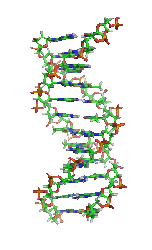From the perspective of conventional cancer treatment a diagnosis of multi-drug resistant cancer is equivalent to a death sentence. By the time such a diagnosis occurs, the patient's body has been irreversibly damaged by chemotherapy and radiation, and an even more aggressive cancer has emerged to take the place of the original one.
Tragically, these treatments do not simply fail, but make the cancers more malignant. This fact is effectively concealed by the name multidrug resistant cancer which makes it seem as if the cancer was so exceptionally resistant and malignant that the normally effective drugs used to treat it just couldn't do the job.
But wouldn't it be more accurate to call this multi-drug failed cancer, putting the responsibility back on the medical establishment, as it should be, in recognition of the impotence, or worse, cancer-promoting nature of its treatment choices?
In other words, instead of blaming the treatment failure on the patient's body or a set of virulent gene mutations within their cancer it is time we look more closely at why conventional chemotherapy and radiation-based treatments breed multidrug resistance within the cancer of patients, who ultimately succumb to the effects of the treatment and not the cancer they were originally diagnosed with.
Multidrug resistant cancer is the byproduct of cancer doctors (oncologists) throwing the chemical and radiological kitchen sink at the patient and not only failing to improve their condition, but significantly worsening it. How so? In order to understand how conventional treatment drives the cancer into greater malignancy, we must first understand what cancer is....
Tumors are actually highly organized assemblages of cells, which are surprisingly well-coordinated for cells that are supposedto be the result of strictly random mutation. They are capable of building their own blood supply (angiogenesis), are able to defend themselves by silencing cancer-suppression genes, secreting corrosive enzymes to move freely throughout the body, alter their metabolism to live in low oxygen and acidic environments, and know how to remove their own surface-receptor proteins to escape detection by white blood cells. In a previous article titled "Is Cancer An Ancient Survival Program Unmasked?" we delved deeper into this emerging view of cancer as an evolutionary throw-back and not a byproduct of strictly random mutation.
Because tumors are not simply the result of one or more mutated cells "going rogue" and producing exact clones of itself (multi-mutational and clonal hypotheses), but are a diverse group of cells having radically different phenotypal characteristics, chemotherapy and radiation will affect each cell type differently.
Tumors are composed of a wide range of cells, many of which are entirely benign.
The most deadly cell type within a tumor or blood cancer, known as cancer stem cells (CSCs), has the ability to give rise to all the cell types found within that cancer.
They are capable of dividing by mitosis to form either two stem cells (increasing the size of the stem population), or one daughter cell that goes on to differentiate into a variety of cell types, and one daughter cell that retains stem-cell properties.
This means CSCs are tumorigenic (tumor-forming) and should be the primary target of cancer treatment because they are capable of both initiating and sustaining cancer. They are also increasingly recognized to be the cause of relapse and metastasis following conventional treatment.
Continue to Page 2
Disclaimer: This article is not intended to provide medical advice, diagnosis or treatment. Views expressed here do not necessarily reflect those of GreenMedInfo or its staff.
See original here:
Are Cancer Stem Cells the Key to Discovering a Cure ...
